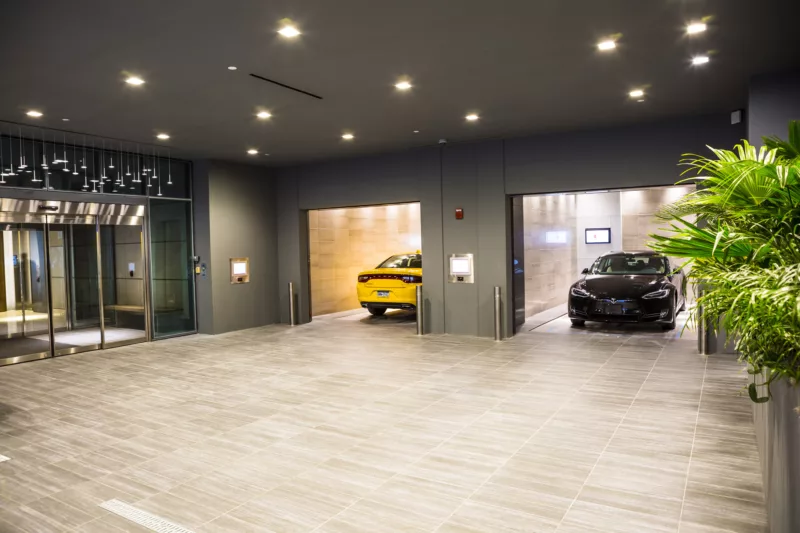
Global urbanization is shaping up to be one of the biggest trends of the 21st century. In 1990, there were only 10 cities in the world with populations of 10 million or more. Now, that number has already reached 40 cities, and is expected to continue to grow as a projected 2.5 billion people join the world’s urban population by 2050.
Such growth naturally presents urban sustainability challenges. Remember that old hippie-era song lyric, “They paved paradise … and put up a parking lot”? One of the most pressing problems growing cities face around the world is how to accommodate greater numbers of vehicles competing for space. Clearly, sustainable parking solutions are needed — and quickly!
7 Reasons Automation Is the Best Green Parking Solution for Urban Environments
An automated parking system benefits the environment in a number of ways. Here are just a few:
- Saving Green Space — City green spaces not only improve surrounding property values, they actively help to improve air quality in the urban environment. An automated parking system stores the same number of cars in a fraction of the space required by a parking ramp or other traditional parking structure or lot, freeing much-needed urban green space. It’s like the old hippie song, reversed!
- Land Use Efficiency — Automated parking can be constructed in tight spaces normally unusable for parking. This allows for more efficient urban land use — a critical factor in sustainable city planning and development. As an added bonus, the reduced need for space can often also expedite the permitting process and/or expand building options where code requires a certain number of parking spaces per occupant or area.
- Lower Embodied Energy — Because a robotic car parking system is far more compact than a traditional parking structure, it requires far fewer resources to build.
- Reduced Emissions — Studies have shown the slower vehicles go, the greater their emissions of CO2 and other greenhouse gasses. Idling vehicles, especially, produce significant emissions for no real benefit. Conventional urban parking encourages these wasteful behaviors as drivers circle slowly to find parking spots and navigate winding parking structures. Automated parking systems can reduce emissions by 20-30 percent while saving drivers the frustration of city parking.
- Improved Urban Air Quality — Reduced emissions also means reduced airborne particulate from vehicle exhaust — for cleaner, healthier cities.
- Reduced Heat Island Effect — Asphalt parking lots absorb and radiate heat from the sun, and are major contributors to the “heat island effect,” where urban temperatures rise sometimes to unbearable levels. An automated parking system can be easily tucked away underground or within a building to mitigate this effect.
- Water Quality Protection — With a robotic car parking system, there is far less surface area for runoff. It can also be equipped with oil interceptors to further prevent ground and surface water pollution.
Looking for Sustainable Parking Solutions?
To learn more about how our automated parking systems can help solve your urban green parking challenges, click here to read about Westfalia’s fully automated parking technology.
